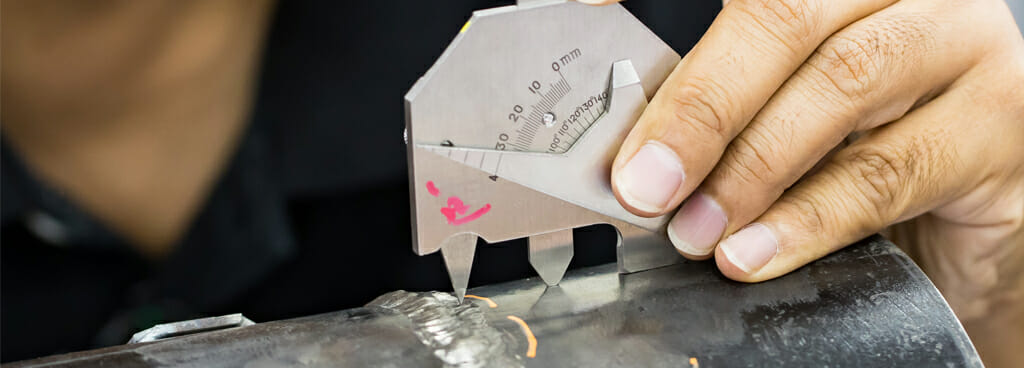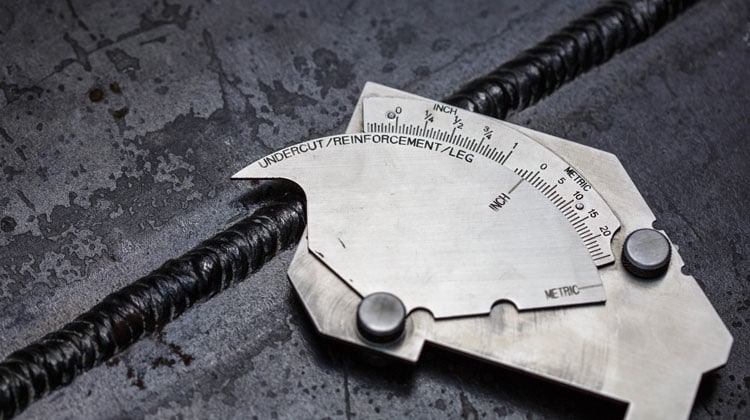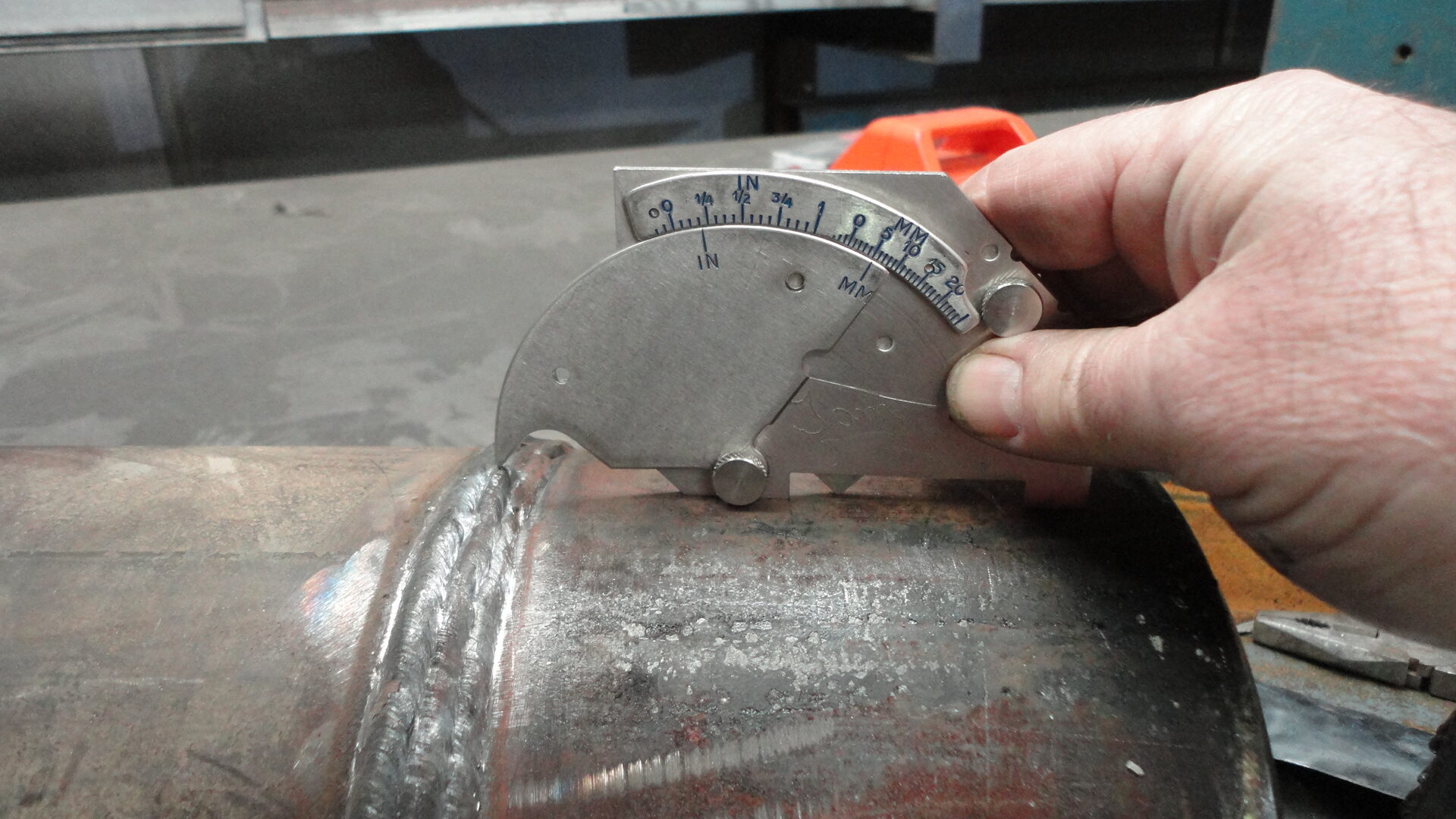A Thorough List for Effective Welding Examination Practices
In the world of welding, the stability of frameworks is critical, demanding a rigorous strategy to inspection practices. A detailed list acts as a crucial tool in making sure adherence to market requirements, including important pre-welding, in-process, and post-welding evaluations. By systematically resolving material verification, weld quality, and thorough documents, companies can dramatically boost safety and security and efficiency. Nonetheless, what certain aspects should be prioritized in each phase to accomplish optimal results? Exploring these essential elements can generate insights that exceptionally impact welding operations.
Comprehending Welding Standards
Welding requirements play a critical role in ensuring the top quality and safety and security of bonded elements and frameworks. These criteria develop the criteria for materials, procedures, screening, and assessment, thus providing a structure for constant high quality assurance in welding procedures. Numerous companies, consisting of the American Welding Culture (AWS), the International Company for Standardization (ISO), and the American Society of Mechanical Designers (ASME), have actually created thorough criteria that regulate various facets of welding.
Recognizing welding standards is necessary for professionals in the area, as adherence to these guidelines lessens the threat of problems and failures in welded joints. These requirements cover particular demands for weld high quality, including acceptable tolerances, the kind of welding strategies to be utilized, and the certifications needed for inspectors and welders.

Pre-Welding Examination Steps
Before any welding procedure commences, a thorough pre-welding examination is necessary to recognize possible issues that may endanger the quality of the weld. This first step functions as a critical foundation for ensuring compliance with appropriate welding codes and criteria.
The initial step in the pre-welding inspection is to confirm the materials being utilized. Next off, it is important to inspect the fit-up of the parts to make sure proper alignment and joint configuration.
Furthermore, reviewing the tidiness of the surface areas is vital; impurities such as rust, oil, or paint can negatively affect the quality of the weld. Following this, a complete evaluation of the welding tools ought to be performed, guaranteeing that it is calibrated and in good working problem.
Lastly, assessing the qualifications of the welding personnel is imperative. Welders must have the required accreditations and experience to do the details welds needed for the job. By adhering to these pre-welding assessment actions, the possibility of problems and failures in the final weld can be dramatically reduced.

In-Process Assessment Techniques
In-process assessment techniques play a vital role in guaranteeing the stability and high quality of welds as they are being executed. These methods allow examiners to determine problems or deviations from requirements in actual time, thereby stopping pricey repair services and making certain adherence to style demands.
One trick strategy entails visual evaluation, where inspectors evaluate the weld grain for harmony, infiltration, and correct account. This can be matched by the use determines to measure weld dimensions, making certain conformity with fixed tolerances. In addition, the execution of non-destructive screening (NDT) methods, such as ultrasonic screening or magnetic particle testing, throughout the welding process can disclose subsurface flaws that may not show up on the surface.
Another important facet is keeping track of welding parameters, including voltage, amperage, and travel rate. Consistency in these parameters is critical for achieving optimum weld high quality. Documenting these parameters throughout the welding procedure gives a traceable record for future recommendation.
Training workers in appropriate examination strategies and making use of suitable devices boosts the performance of in-process examinations. By incorporating these techniques, organizations can accomplish better welds, decrease rework, and inevitably make sure the safety and reliability of bonded my review here structures.
Post-Welding Top Quality Checks
Complying with the completion of welding operations, post-welding quality checks are crucial to verify that the welds meet all wikipedia reference defined criteria and demands. These checks are necessary for ensuring the integrity and longevity of the bonded joints. The evaluation procedure usually begins with an aesthetic assessment, analyzing for surface defects such as splits, porosity, or insufficient blend.
Ultimately, non-destructive testing (NDT) methods, such as ultrasonic testing, radiographic screening, or magnetic fragment testing, might be utilized to discover interior flaws that are not visible to the nude eye. Each method has its one-of-a-kind advantages and is chosen based upon the weld's place, material kind, and the nature of the application.
Additionally, confirming dimensional accuracy is a vital facet of post-welding quality checks. This involves gauging the weld's profile, positioning, and size to make certain compliance with engineering requirements. Analyzing the mechanical properties of the weld, including tensile toughness and ductility, can provide further guarantee of efficiency under operational problems. Generally, extensive post-welding assessments are essential for maintaining safety and security, adherence, and efficiency to regulatory and sector criteria.
Documents and Coverage
How can efficient documents and reporting improve the welding evaluation process? Accurate documents and detailed coverage are vital components that make sure the integrity and top quality of welding procedures. Welding Inspection Milwaukee. They work as an official document of assessment findings, helping with liability and traceability in compliance with industry standards

A well-structured reporting system enables examiners to clearly communicate any areas, inconsistencies, or non-conformances calling for enhancement. This openness promotes an atmosphere of continual renovation, as stakeholders can easily examine previous performance and carry out rehabilitative actions.
Moreover, reliable paperwork consists of thorough documents such as welding treatment specs (WPS), welder credentials, and examination lists. These components provide a framework for evaluating weld high quality and adherence to developed standards. In the occasion of conflicts or high quality concerns, comprehensive paperwork functions as a dependable reference, lowering obscurity and safeguarding all parties included.
Last but not least, maintaining arranged documents aids in training and accrediting workers, making sure that market finest techniques are upheld. Eventually, precise paperwork and reporting not only enhance the welding assessment process however also add to the general security and integrity of bonded frameworks.

Verdict
In final thought, a comprehensive list for effective welding evaluation practices is vital for guaranteeing high quality and safety in bonded structures. Adherence to established welding criteria, careful pre-welding examinations, strenuous in-process assessments, and detailed post-welding quality checks collectively contribute to the integrity of welded joints.
Welding standards play an essential function in ensuring the quality and safety of welded parts and structures. Different companies, consisting of the American Welding Culture (AWS), the International Organization for Standardization (ISO), and the American Society of Mechanical Designers (ASME), have actually established extensive requirements that govern different facets of welding.
Following the completion of welding procedures, post-welding high quality checks are essential to verify that the welds satisfy all specified needs and click here for more standards - Welding Inspection Milwaukee.In conclusion, a thorough list for effective welding assessment practices is crucial for making certain quality and safety in welded frameworks. Adherence to established welding standards, meticulous pre-welding inspections, rigorous in-process assessments, and comprehensive post-welding top quality checks jointly add to the stability of bonded joints